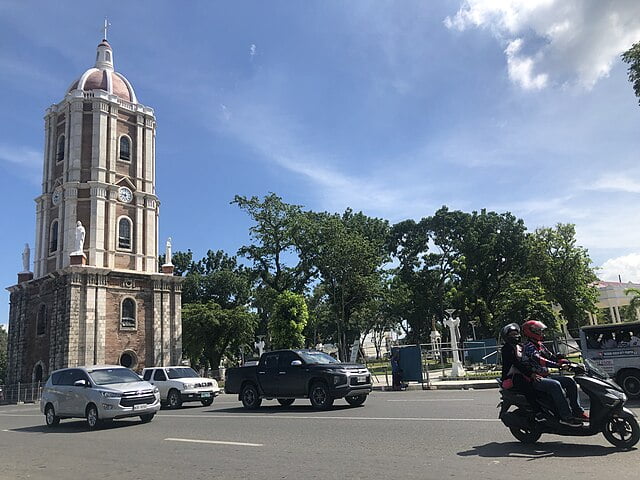Discover Iloilo City tourist spots, where every turn reveals a new adventure! From vibrant festivals to serene beaches, you’ll be charmed by this hidden gem. Dive into a world of culture, history, and tantalizing cuisine waiting for you. Get ready to be amazed!
Iloilo City Tourist Spots: The Charm of Avanceña Ancestral House – A Journey Through Time

Step into the Avanceña Ancestral House, a window into the past in the heart of Iloilo City. Imagine it’s 1865, and you’re visiting the newly built home of Don Fernando Avanceña and his wife, Eulalia Abaja. Designed by Father Anselmo Avanceña, the first parish priest of Molo, this house, also known as Camiña Balay Nga Bato, stands proudly in the Arevalo district.
Fast forward to today, and this 154-year-old gem, declared an Important Cultural Property, still radiates its exceptional cultural, artistic, and historical significance. It’s not just a relic. It’s a living museum, with the 4th generation of the Melocoton-Avancena clan calling it home. It’s sharing their heritage with local and foreign visitors.
Imagine the house’s architecture, echoing the traditional bahay kubo style, supported by 24 sturdy tree trunk pillars. Its bamboo and nipa roofing whisper tales of days gone by. Now, you’re not just reading about history. You’re standing amidst it, feeling the pulse of Iloilo’s vibrant cultural legacy in every corner of the Avanceña Ancestral House.
Save on Travel with Trip.com (ENG)
Tourist Spots in Iloilo City: Balantang National Shrine Museum – A Tribute to Valor and History
You’re about to explore the Balantang National Shrine Museum in Iloilo City, where history whispers tales of courage and sacrifice. Nestled in Balantang, Jaro, this unique museum isn’t just any ordinary site. It’s the only military cemetery beyond the borders of Metro Manila. Imagine walking through the grounds where, during the tumultuous times of World War II, the bloodiest battle led by Col. Macario Peralta, Jr.’s guerrilla forces unfolded. These hallowed grounds witnessed a fierce struggle from February 6 to the liberation of Iloilo City on March 20, 1945.
As you meander through the exhibits, you’re not just seeing artifacts. You’re honoring the gallant men and women of the 6th Military District. These brave souls, under Gen. Macario Peralta’s command, played a pivotal role in liberating the island of Panay from the clutches of the Japanese Imperial Army. The museum serves as a beacon of remembrance for their unwavering courage and sacrifices for freedom.
So, take your time here. Let each exhibit tell you its story. Feel the weight of history and the spirit of heroism permeating Balantang National Shrine Museum. This isn’t just a visit. It’s an immersive journey into the past, where every corner speaks of the resilience and bravery that shaped a nation.
Exploring Casa Mariquit: Iloilo City’s Time-Honored Gem

Let’s take a whimsical journey through the historic corridors of Casa Mariquit in Iloilo City. Picture this: a grand heritage house on the quaint Santa Isabel Street in the heart of the Jaro district. Built in 1803, Casa Mariquit is the oldest heritage house in Iloilo. It’s a silent witness to centuries of stories and memories.
Visiting ancestral houses is a must-do as you wander through Iloilo, a rich historical city. Each one tells a tale, but Casa Mariquit? Oh, it’s unique. Unlike some that have turned into museums or commercial spaces, Casa Mariquit remains true to its roots, untouched by the hands of modernity.
Here’s a little secret: a massive banyan tree looms over the entrance, like a guardian of time, setting the scene for this architectural masterpiece. The former Vice President of the Philippines, Fernando Lopez, constructed the house. He lovingly named it ‘Mariquit’ in honor of his wife.
The original builder was Don Ramón Javellana, a banker-agriculturist with a vision. Over the years, his house evolved into Casa Mariquit, named after his granddaughter, Doña Mariquita Javellana. It’s not just a house; it’s a legacy of the Javellana and Lopez families, encapsulating their rich history within its walls.
Now, don’t expect a splendid palace. Casa Mariquit, or “bahay na bato,” is a modest yet well-preserved stone house, standing with dignity among the more imposing houses of Iloilo’s old rich. Yet, its charm lies in its simplicity and the stories it holds within.
Fort San Pedro: A Sentinel’s Tale in Iloilo City
Welcome to the historical tale of Fort San Pedro in Iloilo City, a sentinel of resilience and history! Built in 1602 by the visionary Pedro Bravo de Acuña, this fort stood firm against Moro and Dutch invasions, safeguarding Iloilo with its formidable presence. Imagine its walls whispering stories of battles and strategies, a time when its triangular bastions symbolized strength in the Philippines.
Alas, the ravages of World War II brought its downfall, but its spirit lives on. Today, where once cannons roared, a peaceful park and a statue of Christ mark this iconic site. So, dear traveler, as you stroll through this park, remember that you’re treading on grounds of valiant history and enduring spirit.
Tourist Spots in Iloilo City: Exploring the Charm of Jaro Belfry

Let me take you on a beautiful journey through the history of Jaro Belfry, a gem in Iloilo City! Picture this: a majestic, free-standing bell tower, not just any tower, but one of the rare ones in the Philippines that stands apart from its church.
Constructed in 1744 using bricks and limestone, this belfry served dual purposes: as a religious symbol and as a watchful tower against invaders during the Spanish colonial era. Its resilience is legendary, having withstood devastating earthquakes in 1787, 1868, and 1948, only to rise again each time.
Fast forward to 1984, and the Jaro Belfry was honored as a National Historic Landmark. Though planned as a viewing deck and tourist center, it remained a silent sentinel due to a conflict with the Archdiocese of Jaro.
Then, in 2022, a significant restoration returned its original grandeur, complete with the four cardinal virtue statues, missing for ages. At the turnover ceremony, the historic moment was marked by the belfry’s bells ringing for the first time in 74 years.
So, stop by Jaro Belfry next time you’re in Iloilo City. It’s not just a tower; it’s a storyteller of resilience, history, and beauty.
Iloilo City Tourist Spots: Molo Church – A Jewel in the City’s Crown
Imagine stepping into a place where history breathes through every stone and stained glass window. Welcome to Molo Church in Iloilo City, a remarkable testament to Filipino craftsmanship and devotion. Built in 1831 under the watchful eye of Fray Pablo Montaño, this architectural marvel originally boasted tabique pampango walls and a chalk roof.
This isn’t just another church; it’s a storybook of the Philippines’ past. Its tall bell towers, crowned with striking red spires, are not just structures but symbols of resilience. The church has seen its share of history, from the curious visit of Dr. Jose Rizal in 1886, attracted by its biblical paintings, to its role as an evacuation center during World War II. With the congregation’s support, Rev. Manuel Alba lovingly restored the church after it suffered damage during the liberation of the Philippines from Japan.
But there’s more. Molo Church is famously dubbed the “feminist church.” Why, you ask? Gaze upon the 16 statues of female saints perched on the aisle pillars, a unique celebration of women in a time and place where such acknowledgment was rare.
The church isn’t just a place of worship; it’s a fusion of art and architecture. Imagine Gothic grandeur meeting Romanesque subtlety, creating an awe-inspiring and serene ambiance. The interior, rich in Gothic elements, tells stories through its intricate designs and patterns.
Step outside, and the view is just as majestic. Molo Church, the only Gothic-Renaissance Church in the Philippines outside Manila, stands proudly as a beacon, drawing tourists and history buffs alike. Its presence in Western Visayas is iconic and a reminder of the rich cultural tapestry in the Philippines.
Final Thoughts
In exploring Iloilo City tourist spots, remember that each corner holds a surprise, blending history with charm. Embrace this journey with curiosity and joy as you uncover the heart and soul of Iloilo, woven into the vibrant tapestry of its streets and smiles.

Pingback: Imus Tourist Spots: Visit This Historic and Beautiful City - Hop 'N Cruise